Radio Flyer, a Chicago legend, is marking its 100th anniversary this year. The company is best known for their little red wagon designed by company founder Antonio Pasin, an Italian immigrant. Radio Flyer wagons haven’t changed much over the years (classics don’t have to), but a noteworthy exception is the Streak-O-Lite Zephyr version made during the early 1930s.
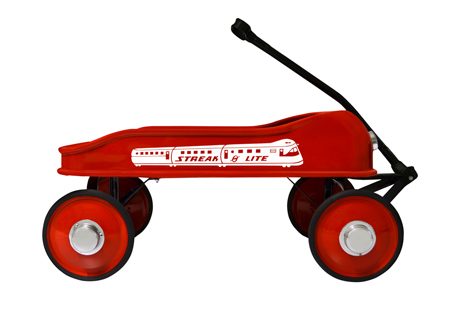
Streak-O-Lite Radio Flyer wagon, c. 1935. Image courtesy of Radio Flyer Inc.
Like much of Chicago’s past, this story is closely tied to the railroads. In this case, the connection is to another Chicago legend, the Burlington Zephyr, the world’s first stainless steel diesel-powered train. The Zephyr, owned and operated by the Chicago, Burlington & Quincy Railroad, made its debut at Chicago’s A Century of Progress International Exposition in 1934 and caused a national sensation.
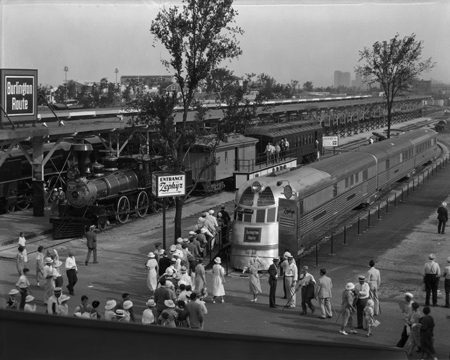
The Burlington Zephyr at the A Century of Progress International Exposition, Chicago, 1934. CHM, Hedrich-Blessing Collection, HB-02278b
Its sleek, streamlined appearance and high-speed engine were created by a team of engineers and designers working for the Edward G. Budd Manufacturing Company of Philadelphia, who built the train. The group included Albert Dean, an aeronautical engineer who developed the Zephyr’s overall shape; Paul Phillippe Cret, a Philadelphia architect credited with the narrow horizontal fluting on the train’s sides and top; and the Chicago architectural firm of Holabird & Root who designed parts of the interior, drew up the blueprints, and provided general oversight of the project. Overall, the Burlington Zephyr is an outstanding example of modern industrial design that seamlessly unites function and style.
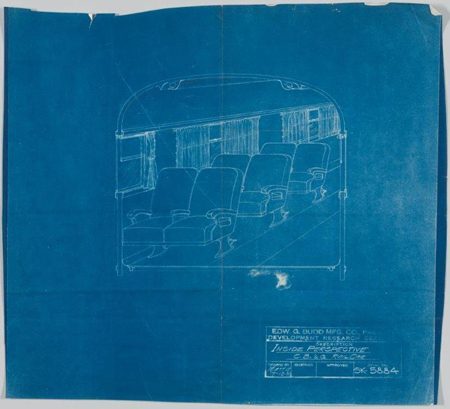
Blueprint of the Zephyr’s interior, 1933, Holabird & Root. CHM, ICHi-092863
Not surprisingly, the Zephyr inspired the making of a Hollywood movie, The Silver Streak, with a plotline based loosely on the train’s real-life 1,015-mile dash from Denver to Chicago for the fair in a record-breaking thirteen hours and five minutes. The Zephyr also inspired Radio Flyer, operators of a successful pavilion at the fair, to issue a special version of their new “Streak-O-Lite” wagon embellished with an image of the Zephyr. As described in the Sears catalog, Streak-O-Lite wagons were “built to look like the new cars with [a] dashboard and powerful beacon lights.” Full-sized wagons with lights could be purchased for $3.98, while those without lights sold for $2.98. A smaller version, the Baby Streak-O-Lite, was made for “Tots Up to 3 Years” and sold for ninety-five cents.
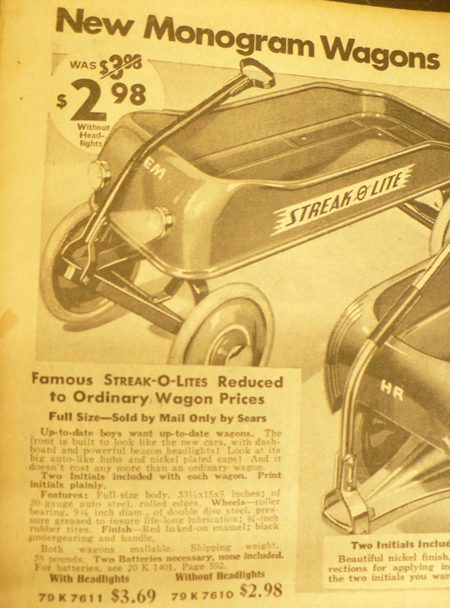
Ad for a non-Zephyr Streak-O-Lite Radio Flyer wagon from Sears, Roebuck & Co. catalog, 1935–36. CHM, photograph by CHM staff
Notice how this wagon’s side decoration differs from the one below and the actual wagon shown above.
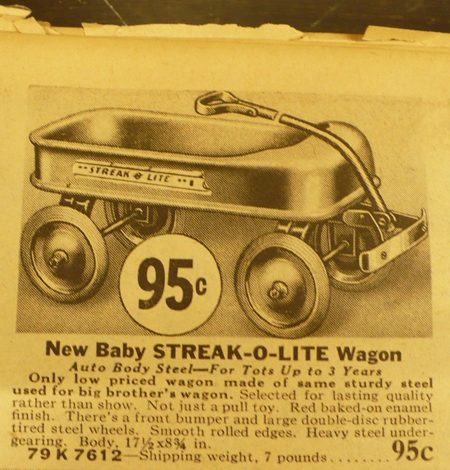
Ad for Baby Streak-O-Lite Radio Flyer wagon from Sears, Roebuck & Co. catalog, 1935–36. CHM, photograph by CHM staff
Streamlining emerged in Europe and the United States in the early 1930s. Modernist designers, chiefly Norman Bel Geddes of New York, championed its smooth, flowing lines for machine-age living, but the strongest boost came from the Zephyr, whose widespread popularity prompted manufacturers across the country to adopt the style in hopes of stimulating consumer sales and reviving the economy during the Great Depression. Streamlining struck a chord with consumers and proved so popular that, according to historian Jeffrey Meikle, it may have marked the emergence of a true national style. This story and many others about Chicago modern design will be explored in our forthcoming exhibition, Modern by Design: Chicago Streamlines America, slated to open in October 2018.
Olivia Mahoney is the senior curator at the Chicago History Museum.